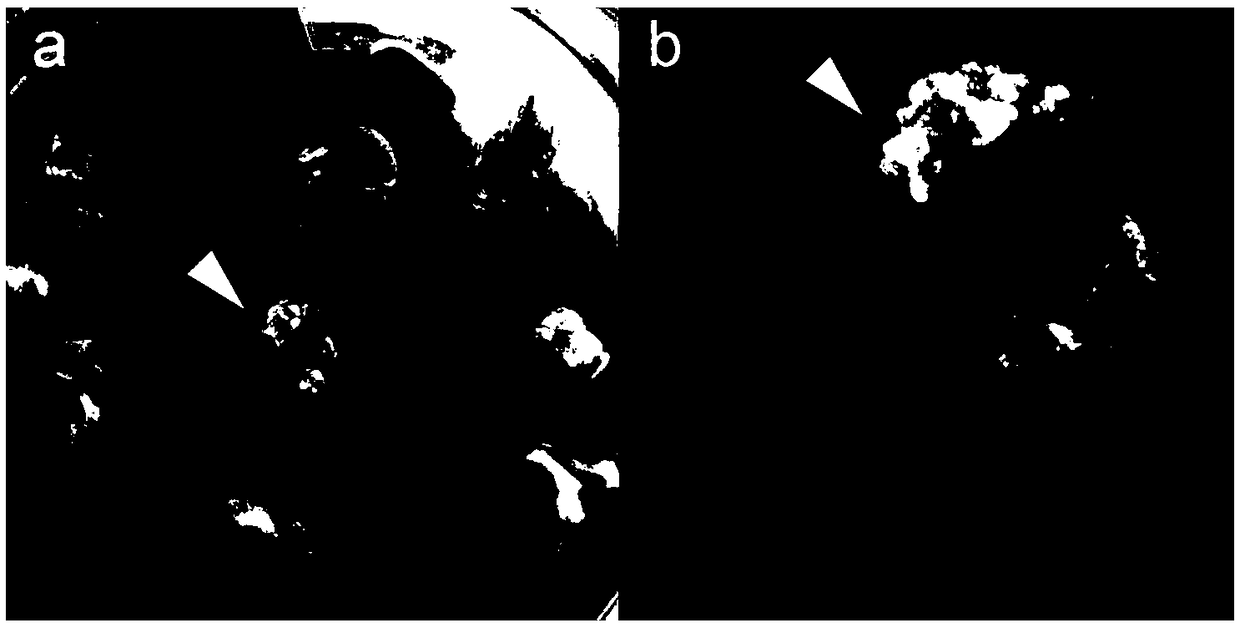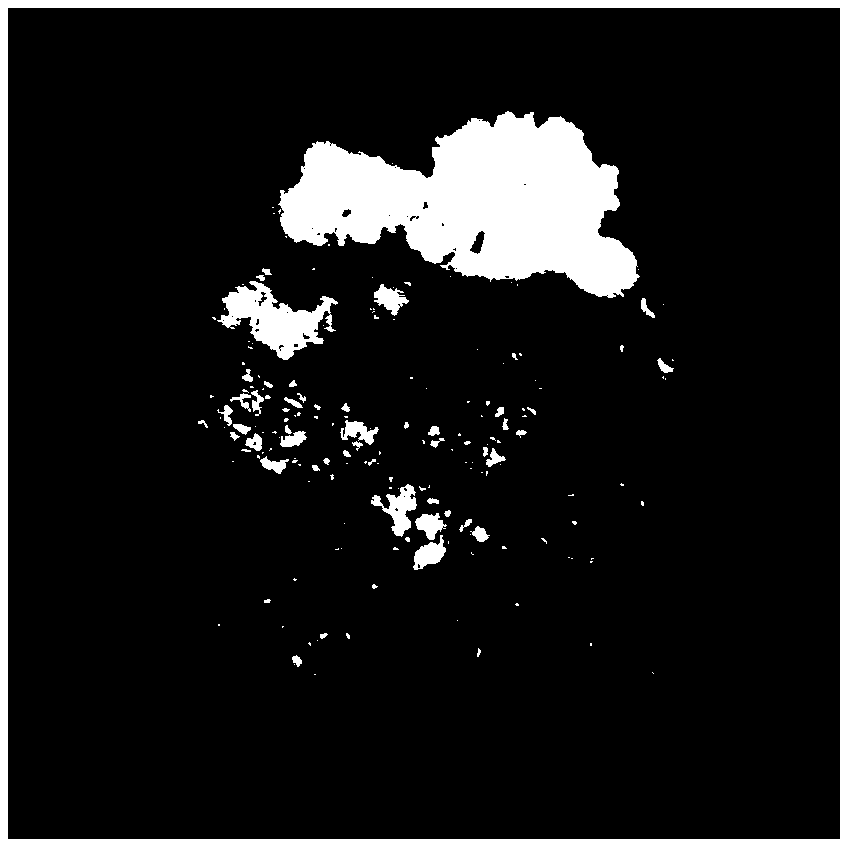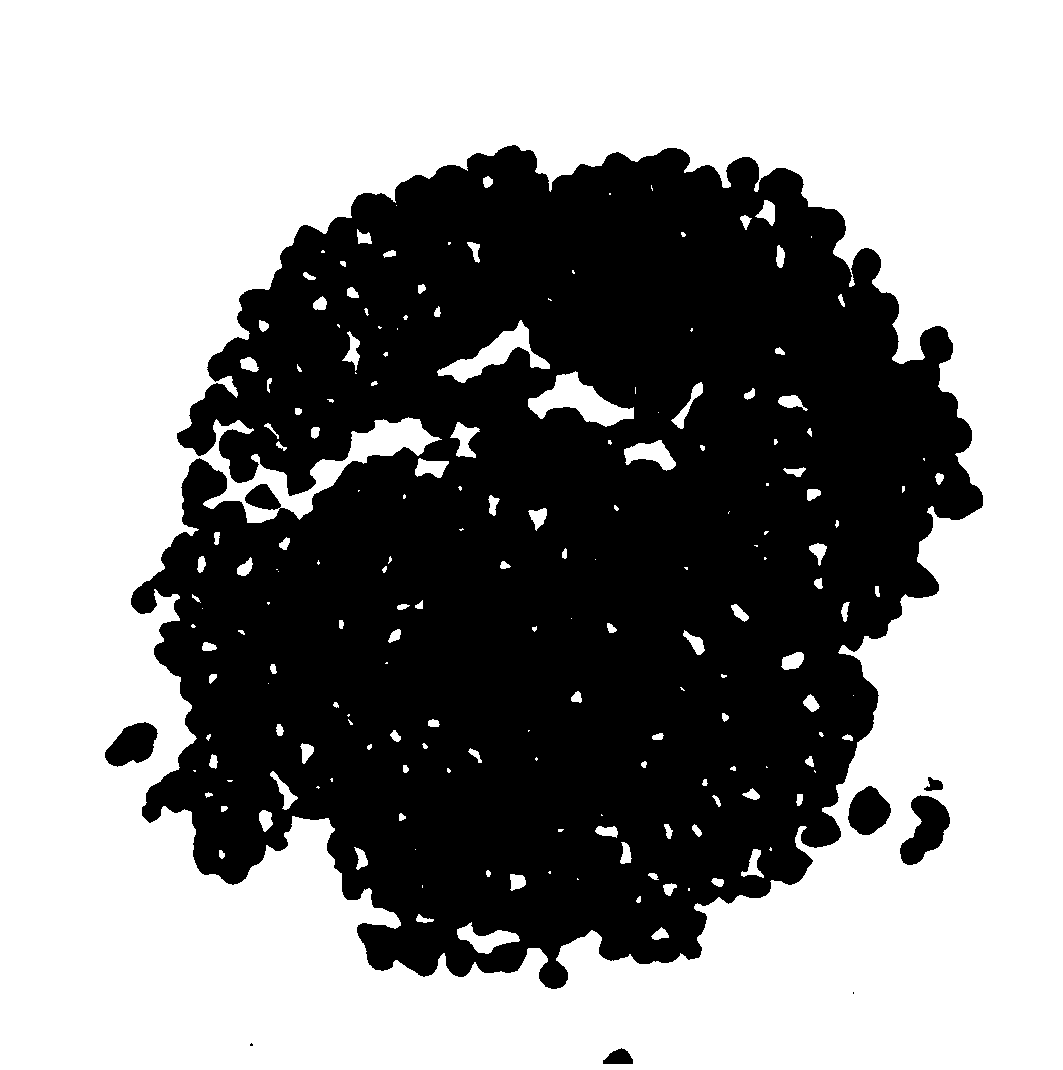Method for inducing embryogenic cells by taking african agapanthus leaves as explant
A technology of embryogenic cells and explants, which is applied in botany equipment and methods, horticultural methods, plant regeneration, etc., can solve the problems of shortening the induction period of embryogenic cells and the difficulty of callus induction, and reduce the incidence of deformed seedlings occurrence, avoid the long-term subculture process, and induce the effect of rapid seedling growth
- Summary
- Abstract
- Description
- Claims
- Application Information
AI Technical Summary
Problems solved by technology
Method used
Image
Examples
Embodiment 1
[0043] The present embodiment provides a method for inducing embryogenic cells using Agapanthus leaves as explants, and the specific steps are as follows:
[0044] Extraction of explants: the leaves of 2-year-old Agapanthus agapanthus at a distance of 0-2.0 cm from the junction of the rhizome were cut with a scalpel. Rinse the leaves of Agapanthus with running water for 90-150 minutes, place them on a clean bench, treat them with 75% (v / v) ethanol for 50-70 seconds, and wash them with ddH 2 Rinse with O for 3 to 5 times, then disinfect with 5% sodium hypochlorite for 5 to 7 minutes, then ddH 2 Rinse with O for 3 to 5 times, then treat with 75% ethanol for 50 to 70 seconds, and wash with ddH 2 Rinse 3 to 5 times, dry the water on the surface of the leaves with sterile filter paper, cut off the peripheral tissues of the leaves (including the tissues at the upper and lower ends and 2 to 3 wrapped old leaves) with a scalpel, and cut off the obtained leaves with a scalpel. The ba...
Embodiment 2
[0052] The present embodiment provides a method for inducing embryogenic cells using Agapanthus leaves as explants, and the specific steps are as follows:
[0053] Extraction of explants: the leaves of 2-year-old Agapanthus agapanthus at a distance of 0-2.0 cm from the junction of the rhizome were cut with a scalpel. Rinse the leaves of Agapanthus with running water for 90-150 minutes, place them on a clean bench, treat them with 75% (v / v) ethanol for 50-70 seconds, and wash them with ddH 2 Rinse with O for 3 to 5 times, then disinfect with 5% sodium hypochlorite for 5 to 7 minutes, then ddH 2 Rinse with O for 3 to 5 times, then treat with 75% ethanol for 50 to 70 seconds, and wash with ddH 2 Rinse 3 to 5 times, dry the water on the surface of the leaves with sterile filter paper, cut off the peripheral tissues of the leaves (including the tissues at the upper and lower ends and 2 to 3 wrapped old leaves) with a scalpel, and cut off the obtained leaves with a scalpel. The ba...
Embodiment 3
[0061] The present embodiment provides a method for inducing embryogenic cells using Agapanthus leaves as explants, and the specific steps are as follows:
[0062] Extraction of explants: the leaves of 2-year-old Agapanthus agapanthus at a distance of 0-2.0 cm from the junction of the rhizome were cut with a scalpel. Rinse the leaves of Agapanthus with running water for 90-150 minutes, place them on a clean bench, treat them with 75% (v / v) ethanol for 50-70 seconds, and wash them with ddH 2 Rinse with O for 3 to 5 times, then disinfect with 5% sodium hypochlorite for 5 to 7 minutes, then ddH 2 Rinse with O for 3 to 5 times, then treat with 75% ethanol for 50 to 70 seconds, and wash with ddH 2 Rinse 3 to 5 times, dry the water on the surface of the leaves with sterile filter paper, cut off the peripheral tissues of the leaves (including the tissues at the upper and lower ends and 2 to 3 wrapped old leaves) with a scalpel, and cut off the obtained leaves with a scalpel. The ba...
PUM
 Login to View More
Login to View More Abstract
Description
Claims
Application Information
 Login to View More
Login to View More - R&D
- Intellectual Property
- Life Sciences
- Materials
- Tech Scout
- Unparalleled Data Quality
- Higher Quality Content
- 60% Fewer Hallucinations
Browse by: Latest US Patents, China's latest patents, Technical Efficacy Thesaurus, Application Domain, Technology Topic, Popular Technical Reports.
© 2025 PatSnap. All rights reserved.Legal|Privacy policy|Modern Slavery Act Transparency Statement|Sitemap|About US| Contact US: help@patsnap.com



